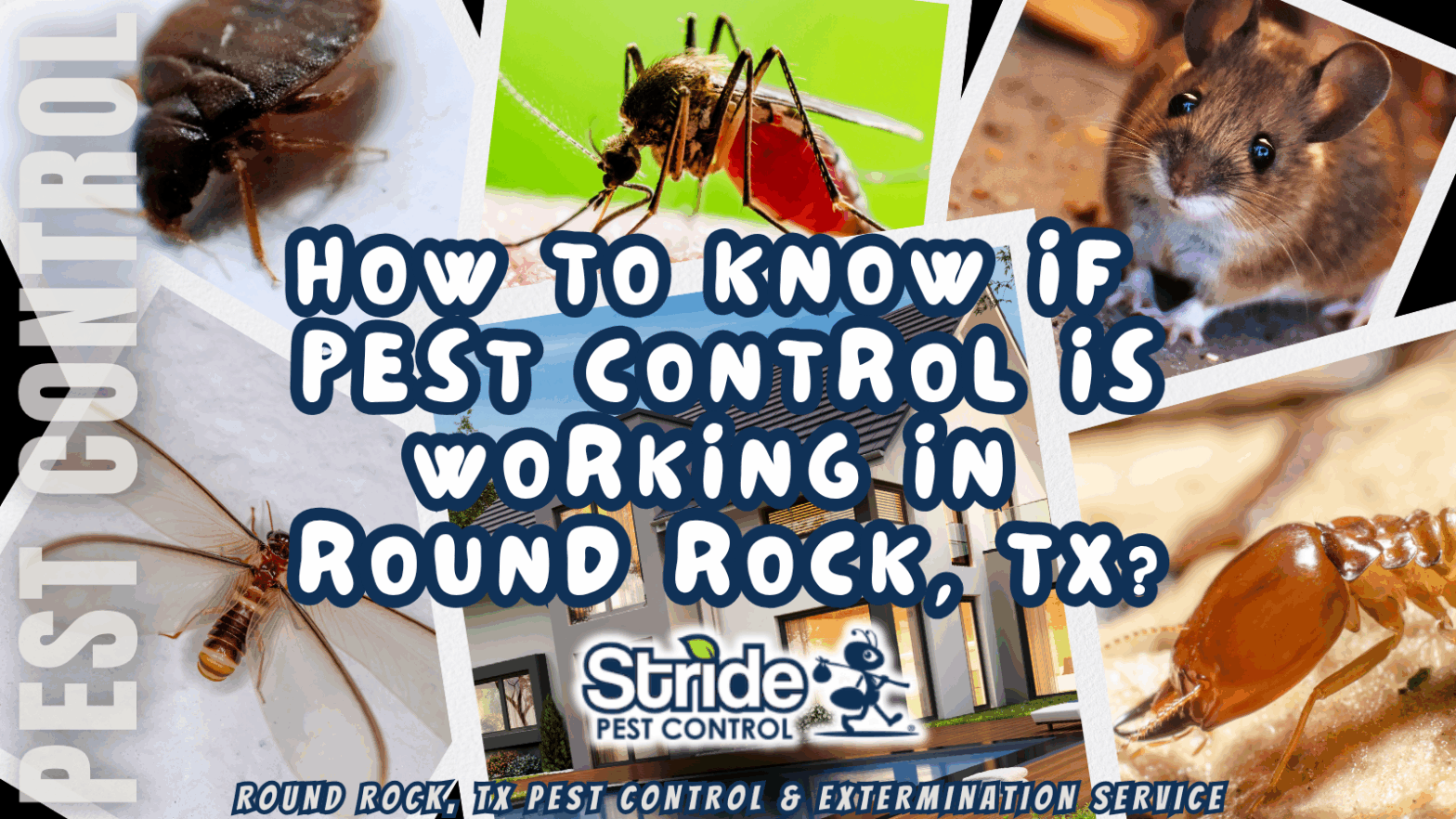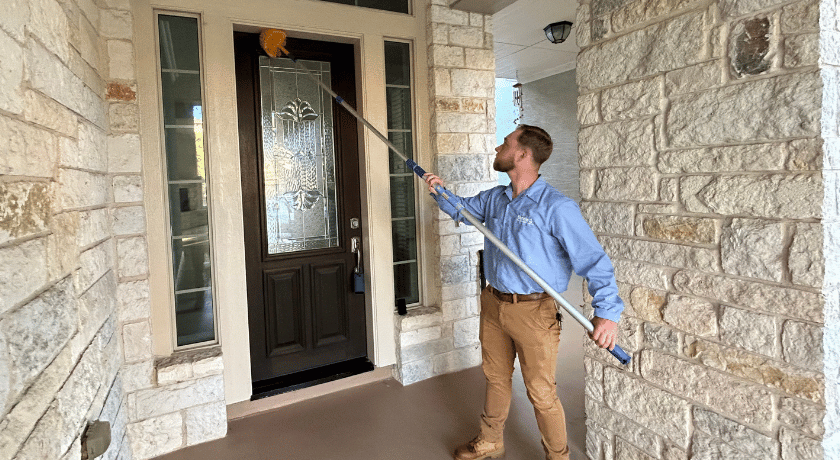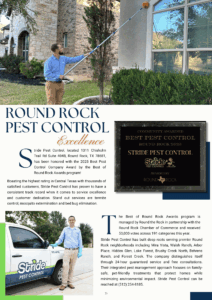
To know if pest control is working in Round Rock, TX, one must observe changes in pest activity. Monitor for new infestations, especially in high-risk areas like kitchens. Check for physical signs, such as droppings or nests. Review treatment effectiveness over time and note any environmental changes that could affect pests. Seeking professional inspections can provide insights into pest behavior patterns. Keeping track of treatment history is also essential for evaluating long-term effectiveness. For expert evaluation and follow-up support, visit Round Rock, TX pest exterminators.
Key Article Highlights
- Monitor pest sightings and physical signs over time; a decline indicates treatment effectiveness.
- Conduct regular inspections in high-risk areas, especially during peak pest seasons.
- Track treatment history and compare pest activity before and after interventions.
- Evaluate any changes in pest behavior patterns, such as increased indoor activity during winter.
- Consult professionals for expert assessments to ensure effective pest management strategies.
Observing Changes in Pest Activity
How can one tell if pest control methods are effective? Observing changes in pest activity is vital. First, individuals should monitor pest behavior over time. A decline in sightings or signs of pests, such as droppings or damage, indicates progress. Additionally, seasonal changes can affect pest activity; for example, some pests may be more noticeable in warmer months. During these periods, comparing pest numbers before and after treatment can provide clear insights. If pests return during their peak season, it may signal that control methods are not working. Ultimately, consistent observation and documentation of pest behavior can guide homeowners in evaluating the effectiveness of their pest control efforts. Furthermore, utilizing integrated pest management strategies can enhance the overall success of your pest control efforts. Regular routine inspections and adjustments to control methods based on findings can further support effective pest management. Additionally, employing residual sprays during treatment can significantly reduce pest populations and aid in long-term control.
Monitoring for New Infestations
Monitoring for new infestations is essential after pest control treatments. Regular inspections should be scheduled to check for signs of activity, such as droppings or damage. Identifying these signs early can help prevent a larger problem from developing.
Regular Inspections Schedule
When is the best time to conduct regular inspections for new infestations? Establishing an effective inspection frequency is essential for maintaining a pest-free environment. Regular inspections should be scheduled based on the type of property and its risk factors. An inspection checklist can help guarantee thorough evaluations.
Consider the following key elements during inspections:
- Location: Focus on areas prone to pest activity, such as kitchens and basements.
- Season: Inspect more frequently during peak pest seasons, typically spring and fall.
- Previous Infestations: Pay special attention to areas previously affected by pests.
Signs of Activity
After establishing a regular inspection schedule, it becomes important to identify signs of pest activity that may indicate new infestations. Utilizing effective pest identification techniques can help in recognizing these signs. Monitoring for seasonal activity patterns is also essential, as some pests may be more active at certain times of the year.
| Signs of Activity | Description |
|---|---|
| Droppings | Small, dark pellets in areas |
| Damage to Property | Chewed wires, holes in walls |
| Nesting Materials | Shredded paper, insulation |
| Unusual Sounds | Scratching or scurrying noises |
| Visible Pests | Sightings of insects or rodents |
Assessing the Effectiveness of Treatments

Evaluating the effectiveness of pest control treatments requires careful observation and analysis. One must consider various factors to determine if the treatments are successful. Key aspects to assess include:
- Treatment Longevity: How long the effects last after application can indicate effectiveness. Short-lived results may suggest insufficient potency. For example, the use of heat treatment can provide lasting results against bed bugs, while insect growth regulators can effectively disrupt pest life cycles.
- Pest Resistance: Monitoring if pests reappear can reveal their adaptability to treatments. Resistance may require alternative strategies.
- Environmental Impact: Evaluating changes in the surrounding area can help understand how treatments affect local ecosystems. Additionally, understanding the use of liquid soil treatments can provide insights into long-term effectiveness in controlling pest populations, especially in shaded yard areas that can harbor pests.
Checking for Physical Signs of Pests
To determine if pest control is effective, one should check for physical signs of pests. This includes inspecting for droppings in areas like kitchens and basements, looking for nests in hidden spots, and monitoring activity levels around the home. Noticing fewer signs can indicate that the pest control measures are working.
Inspect for Droppings
Pest droppings serve as a clear indicator of an infestation and can help homeowners assess the effectiveness of their pest control efforts. Understanding pest droppings identification is essential for determining if pests persist after treatment. Homeowners should regularly inspect areas where pests are likely to frequent, such as kitchens, basements, and attics.
Key signs to look for include:
- Size and shape: Different pests leave distinct droppings; identifying these can pinpoint the problem.
- Location: Concentrated droppings in specific areas suggest active infestations.
- Color and consistency: Fresh droppings are often moist and dark, indicating ongoing activity.
Implementing effective cleanup strategies, such as wearing gloves and using disinfectants, can help maintain a pest-free environment.
Look for Nesting
A thorough inspection for nesting can reveal valuable information about the presence of pests in a home. Pests, such as rodents and insects, often exhibit specific nesting habits that indicate their activity. Common nesting locations include attics, basements, and behind walls. Homeowners should look for signs such as shredded materials, droppings, or visible nests made of twigs, fabric, or insulation. These indicators can help identify the type of pest and the extent of the infestation. By understanding these nesting habits, homeowners can assess the effectiveness of their pest control measures. If nests are still present despite treatments, it may suggest that the pest control efforts need to be reevaluated or intensified for ideal results.
Monitor Activity Levels
After identifying nesting sites, the next step is to focus on monitoring activity levels to determine if pest control measures are effective. Effective pest monitoring involves observing for physical signs of pest activity. Activity tracking can help homeowners assess the success of their pest control efforts.
Key indicators to check include:
- Droppings or urine: Finding pest droppings can indicate ongoing activity.
- Gnaw marks or damage: Signs of chewing on wood, wires, or insulation suggest pests are still present.
- Unusual noises: Hearing scratching or scurrying sounds can imply that pests are active within walls or ceilings.
Evaluating Environmental Changes
How can one determine if pest control measures are truly effective? Evaluating environmental changes can provide valuable insights. First, one should observe any shifts in pest activity correlating with seasonal changes. For instance, if fewer pests appear during their peak season, this may indicate effective control. Additionally, examining the environmental impact is essential. A decrease in pest populations should not harm beneficial insects or disrupt local ecosystems. Homeowners can also monitor plant health and overall cleanliness, as healthier plants often suggest fewer pests. Comparing these observations over time can help gauge the long-term effectiveness of pest control. By focusing on these environmental indicators, one can better understand the success of pest management efforts.
Seeking Professional Inspections

What steps can homeowners take to guarantee their pest control efforts are effective? Seeking professional inspections is essential for a thorough approach. A professional evaluation can provide insights beyond what homeowners can observe. This includes a detailed pest assessment to determine the effectiveness of current pest management strategies.
Homeowners should consider the following during inspections:
- Identify pest hotspots: Professionals can locate areas that may need further attention.
- Evaluate treatment methods: Experts can assess if the applied methods are suitable for the specific pest and environment.
- Recommend ongoing strategies: A plan for future prevention can be developed based on the findings.
Such inspections guarantee that pest control measures are not only effective but also sustainable in the long run.
Understanding Pest Behavior Patterns
Why do pests seem to invade certain areas more than others? Understanding pest behavior patterns is essential for effective control. Many pests are drawn to locations that provide food, water, and shelter. For instance, ants often invade kitchens during warmer months, coinciding with their mating season. Seasonal behaviors also play a significant role; some pests enter homes during winter seeking warmth. Additionally, the timing of pest mating can lead to sudden population spikes, making infestations more noticeable. Identifying these patterns allows homeowners to anticipate pest activity and implement preventive measures. By recognizing when and where pests are likely to appear, individuals can better manage their environments, ultimately enhancing the effectiveness of pest control efforts in Round Rock, TX.
Keeping Track of Treatment History
Tracking the history of pest control treatments is essential for evaluating their effectiveness over time. A well-maintained treatment timeline helps homeowners assess the success of their pest management strategies. Utilizing proper documentation methods can enhance this process markedly.
- Record Dates: Note the specific dates of each treatment to monitor intervals and patterns.
- Note Observations: Document any pest sightings or changes in activity after each treatment.
- Evaluate Results: Compare the frequency and severity of pest issues before and after treatments.
Frequently Asked Questions
How Long Does It Take to See Results From Pest Control Treatments?
Studies show that 80% of pests can be eliminated within a few days of treatment. However, visible signs of success may take one to three weeks, depending on treatment duration and pest type. Patience is essential.
Are There Any Safe Pest Control Options for Pets and Children?
Safety for pets and children is essential when choosing pest control options. Natural remedies, such as diatomaceous earth or essential oils, provide effective alternatives, ensuring pet safety while managing pest issues without harmful chemicals or toxins.
What Types of Pests Are Common in Round Rock, TX?
In Round Rock, common household pests parade through homes, flaunting their seasonal infestations. Ants, roaches, and termites often perform, while mosquitoes buzz in the background, ensuring a lively atmosphere for unsuspecting residents. Homeowners may seek refuge!
How Often Should I Schedule Pest Control Services?
Scheduling pest control services typically follows frequency recommendations of every three months. However, specific service intervals may vary based on pest activity and infestation severity, requiring adjustments for ideal effectiveness and ongoing protection against pests.
Can DIY Methods Complement Professional Pest Control Treatments?
DIY strategies can effectively complement professional pest control treatments. By incorporating integrated pest management, individuals can enhance results. Simple methods like sealing entry points or maintaining cleanliness can support professionals in reducing pest populations more effectively.
Call today if you are in need of a pest exterminator in Round Rock, TX!
(512) 254-8185
HOW TO KNOW IF PEST CONTROL IS WORKING IN ROUND ROCK, TX PDF


